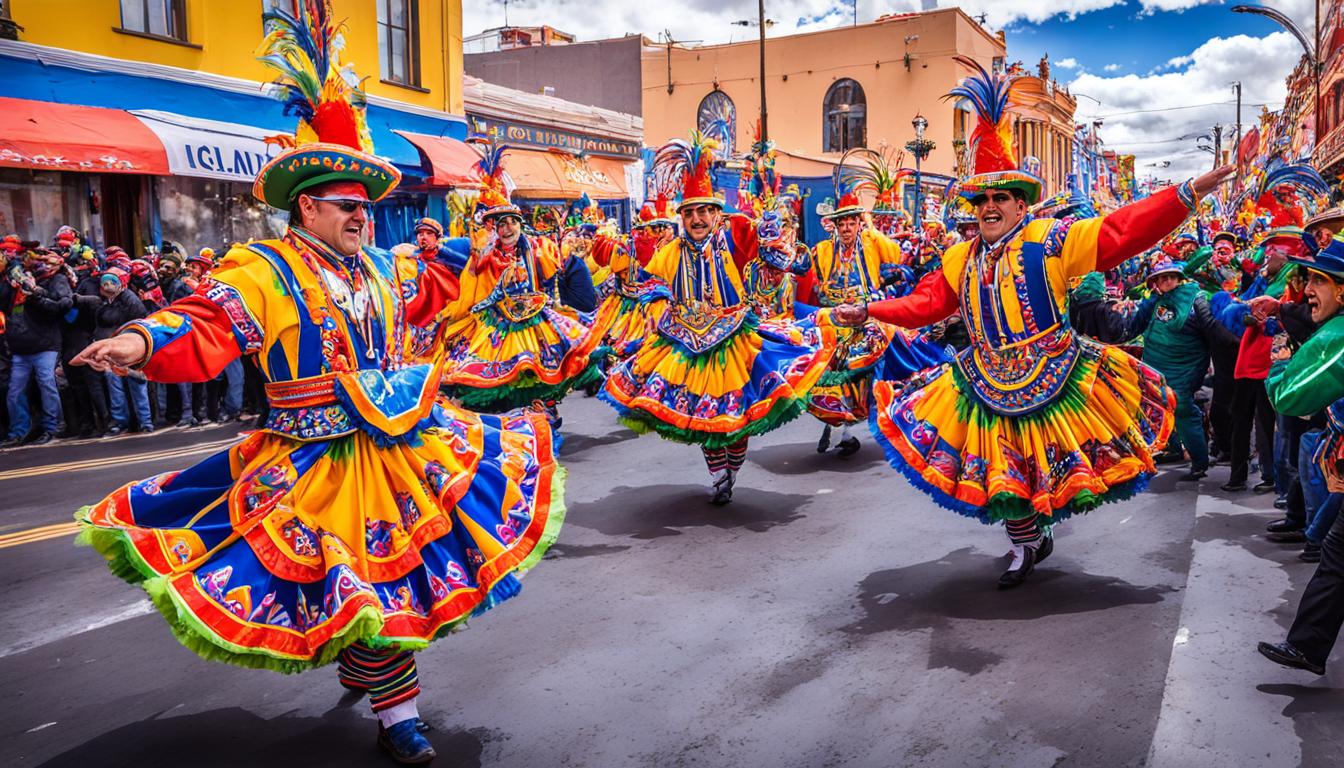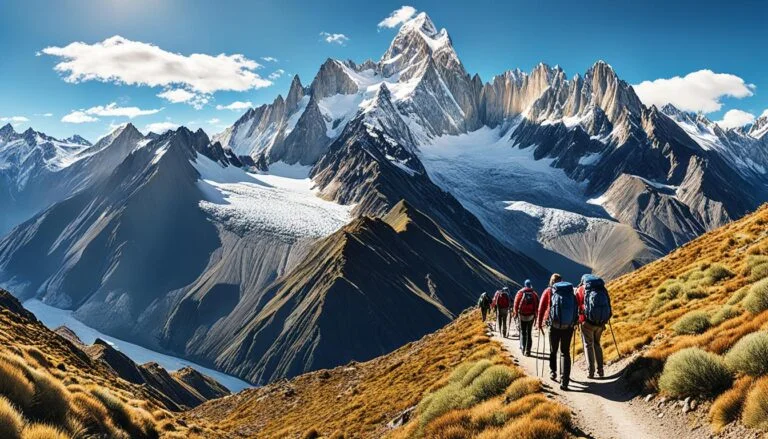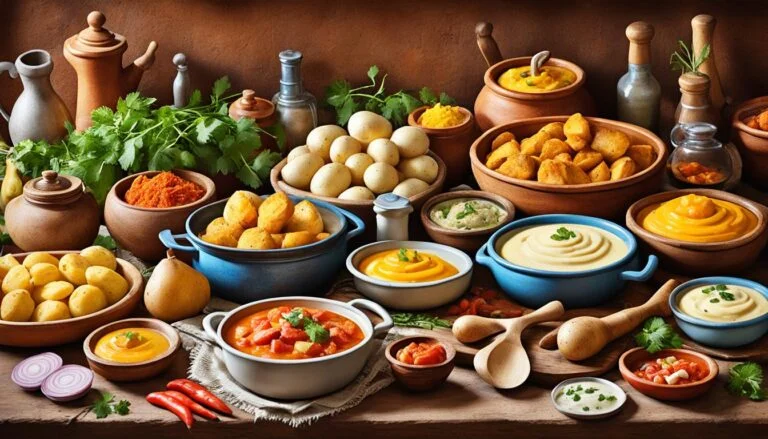Dance with the Locals: Experiencing Bolivia’s Colorful Festivals
Do you ever just want to dive into a rich cultural celebration? One filled with the beat of traditional songs and dances that enchant you? Bolivia welcomes you to this lively dream, now a real adventure. Let’s delve into Bolivia’s captivating festivals, where everyone joins in, feeling like one big family. The celebration’s cheer outshines even the brightest sun.
In the lively streets of La Paz, a revelation came to the author. A feast of Bolivia’s culture played out, bringing together people from near and far. Among the lively scene were groups of dancers in bright outfits, all moving as one. Their music, full of tradition, amplified the joy. It was a beautiful chaos like no other.
What was the festival’s secret to drawing everyone in? And how might you blend with Bolivia’s culture on your travels? Get ready to challenge your views and gain a true admiration for Bolivia’s Indigenous people. It’s a journey that opens your eyes and heart to their strong spirit and tradition.
Key Takeaways
- Discover the vibrant festivals that showcase Bolivia’s rich cultural heritage
- Immerse yourself in the rhythms of traditional music and the graceful movements of folkloric dances
- Gain a deeper understanding of the resilience and pride of Bolivia’s Indigenous communities
- Witness the interplay of pre-Columbian and Catholic influences in Bolivia’s cultural celebrations
- Explore the colorful and cheerful displays of Bolivia’s diverse cultural traditions
Carnaval de Oruro: A Vibrant Celebration of Bolivian Culture
The Carnaval de Oruro is a famous festival in Bolivia. It’s a captivating celebration that shows off Bolivia’s rich culture. It started with the Indigenous Uru people’s traditions and then mixed in Catholic beliefs. This created a special blend of cultures known as syncretism.
The History of Oruro Carnival
The Oruro Carnival’s story goes way back to the pre-Columbian Itu festival. The Uru people celebrated it. After the Spanish arrived, it changed. They added Catholic images. Today, these blends of beliefs and traditions make up Bolivian culture.
The Dances and Rituals
The Carnaval de Oruro dazzles with its dances and rituals. These are all for the Virgen del Socavón. She’s the patron saint of miners in Oruro. The dances highlight the colorful Indigenous culture of the area. They show traditions that have lived on for generations.
Iconic Symbols and Characters
This carnival is famous for its special symbols and characters. You’ll see the Diablada (dance of the devils) and Morenada (dance of the black slaves). These acts, with their fancy costumes and masks, make a show that’s hard to forget. They really bring the spirit of Bolivian festivals to life.
| Key Aspects of Carnaval de Oruro | Description |
|---|---|
| Origins | Rooted in the pre-Columbian Itu festival observed by the Indigenous Uru people |
| Cultural Syncretism | Incorporates Catholic iconography and religious dimensions, reflecting the diverse influences on Bolivian culture |
| Patron Saint | Honors the Virgen del Socavón, the patron saint who watches over and protects miners in Oruro |
| Iconic Dances | Features the Diablada (dance of the devils) and the Morenada (dance of the black slaves) |
Bolivia Festivals: Immersing in the Country’s Rich Heritage

Bolivia is known for its famous Carnaval de Oruro, but there’s more to explore. The country hosts a variety of festivals that highlight its diverse cultural heritage. Out of these, a folkloric dance festival in La Paz left a lasting impression on the author.
La Paz’s Folkloric Dance Festival
In the vibrant city of La Paz, the author came across a special sight. They saw groups performing folkloric dances and playing traditional music. These performers came from different parts of the La Paz department to share their cultural traditions.
The event allowed the author to get close to Bolivia’s cultural richness. They marvelled at the vivid dances and rhythms deeply rooted in Bolivian culture. The experience included lively foot movements and colorful outfits, offering a true taste of the local Indigenous community’s cultural heritage.
Cultural Syncretism
Similar to the Carnaval de Oruro, Bolivia’s events show a mix of cultures. The La Paz folkloric dance festival intertwines Indigenous dances with Catholic symbols. It underlines the country’s strength in holding onto its cultural identity despite diverse influences.
Through these festivals, visitors can understand Bolivia’s rich cultural heritage better. They get to see the mix of traditional folkloric dances and the intertwined cultural history. This immersion offers a profound look into Bolivia’s dynamic culture.
Conclusion
Bolivia’s festivals show its rich cultural heritage. They include the Carnaval de Oruro and La Paz’s folkloric dance festival. These events show traditional music, dance, and costumes. They prove the strength and pride of Bolivia’s Indigenous people.
Visiting these festivals helps you understand Bolivia’s varied culture better. They show the mix of traditional Uru festivals and the Catholic Carnaval de Oruro. This blend of traditions and art is truly unique.
Experiencing these festivals deeply connects you with Bolivia’s history. Whether you’re watching the dances or enjoying the colorful costumes, you’re learning about the heart of Bolivian culture.







